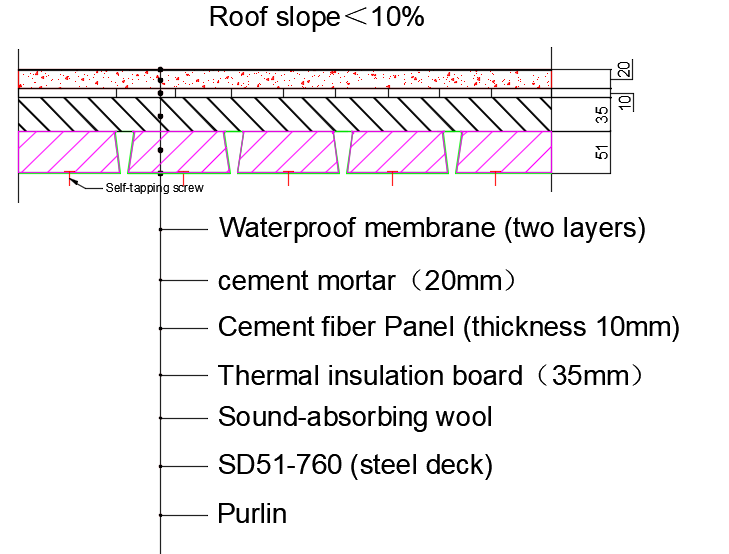Phone: 8613421351153
The application of steel roof decks in flexible roofs
The application of steel roof decks in flexible roofs has been a popular design choice for architects, builders, and engineers for years. The use of steel decks in roofs allows for a variety of options when it comes to design, from simple flat roofs to more complicated curved designs.
Steel roof decks are an ideal choice for flexible roofs because they are incredibly strong and durable. Steel decks can withstand extreme weather conditions such as high winds, heavy rain, and snow, and can last for decades when properly installed and maintained.
Steel roof decks are a type of roofing material that consists of a series of steel or aluminum sheets that are connected together to form a deck-like structure. Each sheet of steel or aluminum is cut to the desired size and shape to fit the roof. The sheets are then screwed together to form a solid and continuous surface. These panels are usually attached to purlins or steel framing using rivets or bolts, depending on the size and shape of the roof.
Sound insulation of steel roof deck
Steel roof decks are great for soundproofing roofs. When properly installed, steel decks can block out most of the noise from the outside, making them a great choice for those who live in areas with a lot of noise pollution. Installing sound-absorbing cotton on the ribs of the steel deck can properly utilize the effective space in the steel deck and make the upper surface of the steel deck more flat.
Insulation of steel roof deck
Steel roof decks also provide superior insulation, which can help reduce energy costs. A 35mm thick thermal insulation board is placed on the upper part of the steel deck, which can effectively reduce the indoor temperature caused by sunlight and keep the internal space cool. In winter, it can prevent indoor heat from escaping.
Wind resistance of steel roof deck
Placing cement fiber boards on top of the thermal insulation board is to increase the load on the roof and prevent damage to the flexible roof when the wind blows; the other function is to make the lower structure of the roof more flat.
Placing cement fiber boards on top of the thermal insulation board is to increase the load on the roof and prevent damage to the flexible roof when the wind blows; the other function is to make the lower structure of the roof more flat. Then lay 20mm cement mortar on it to ensure the integrity of the roof. Lay two more waterproof membranes on the cement mortar to ensure the waterproof performance of the roof. In conclusion, steel decks are an excellent choice for flexible roofs. They are strong, durable, and aesthetically pleasing, and they can be quickly and easily installed. Steel decks are also affordable and environmentally friendly, making them an ideal choice for anyone looking to save money and help the environment.

